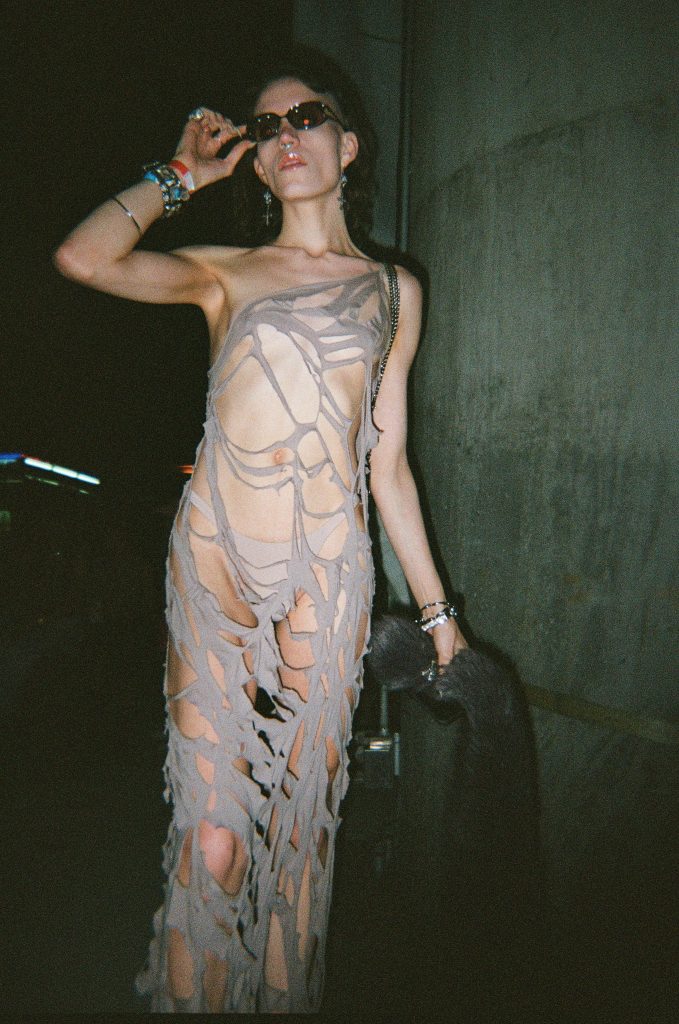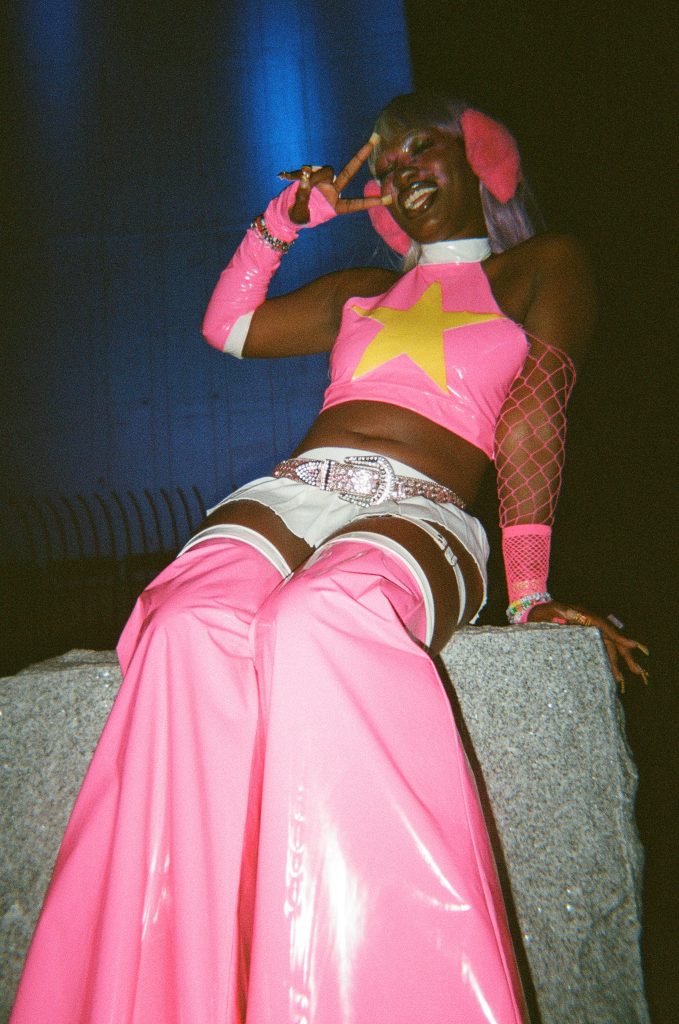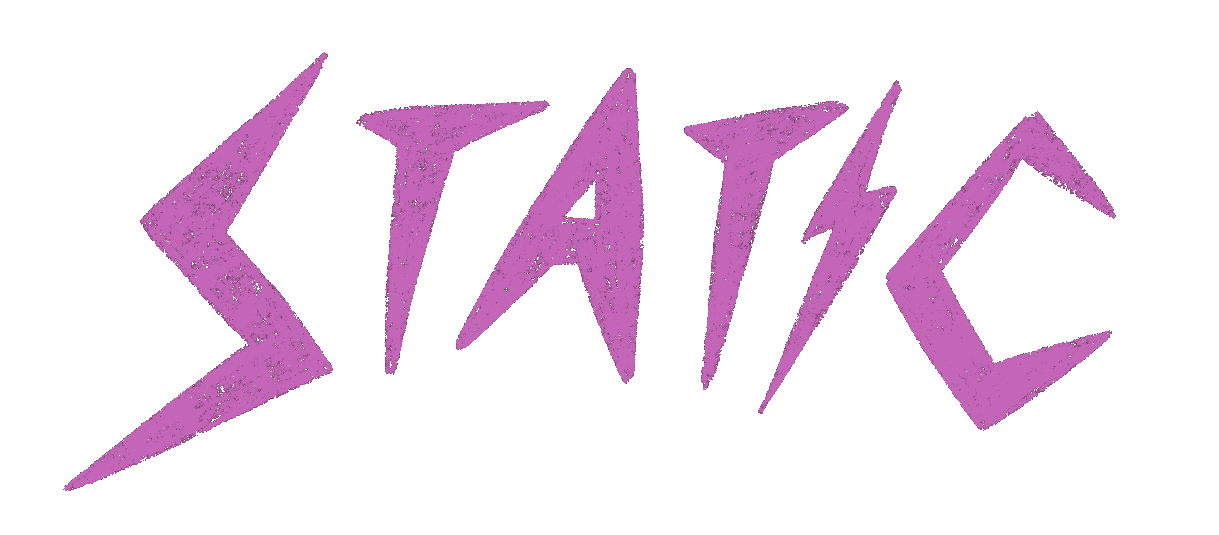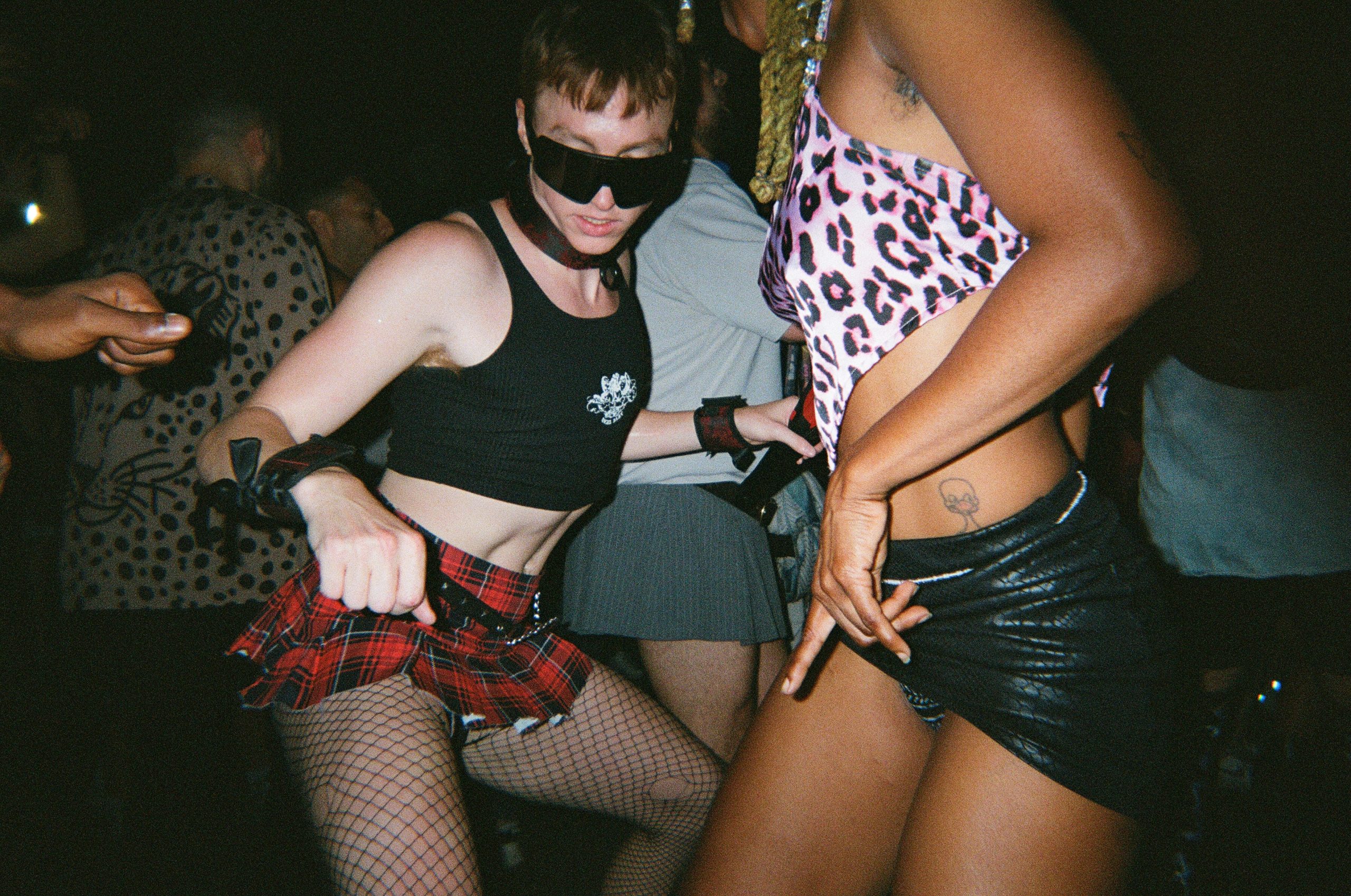It’s been hard to tell the cultural difference between Coachella and Lollapalooza and the dozen other genre-less mainstream festivals out there. Every lineup feels at least 65% similar and selecting attendance has all but come down to seeing the fixed menu in the Bay Area dew or the Austin heat.
In this chasm, the format of the niche festival has gained steam, returning festivals to their original appeal. The structure, preferring smaller spaces with specific audiences, feels like a more satisfying scenario for all parties: audiences avoid unfamiliar artists, artists avoid disinterested audiences, and the low overhead feels a lot safer for promoters in an age where Coachella and Lollapalooza aren’t selling out for the first time in a decade. On the last weekend of pride, LadyLand expounded this strategy to a tee; by keeping their finger on the pulse of Brooklynite gays of all shades, LadyLand curated one of the sweatiest and passionate festivals of the season.
Presented by Ladyfag, famed NYC party producer and underground it-girl, the festival positioned itself in 2018 as a New York City pride marquee event. Headlined by Tinashe, Arca, and Tokischa, the festival was hosted at Under the K Bridge Park, the outdoor venue found under the Kosciuszko bridge that has become a fond venue for electronic artists chasing a renegade experience. Its proximity to industrial warehouses canopied by a set of highways has appealed to Four Tet, Björk, and ISOxo and Knock2 in past months.
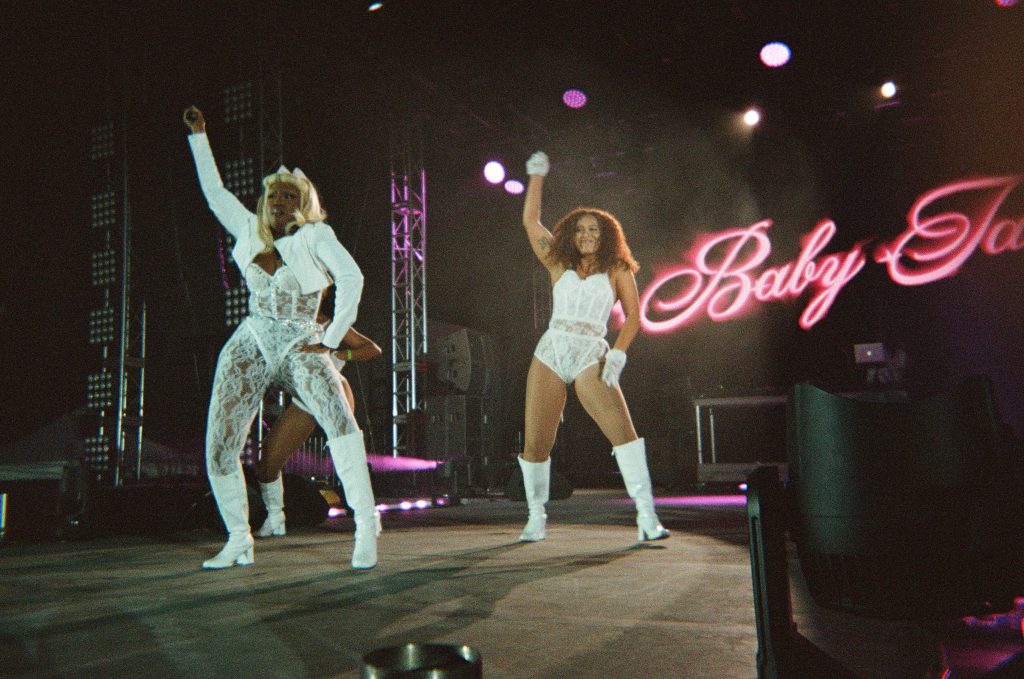
The festival toed the line between DJs meant to keep ears and bodies happy and pop stars selected to create viral moments for the event. “The Truck Stage,” which featured a round the clock roster of underground club-circuit DJs, was a literal Red Bull truck placed in between the main Fist stage and the secondary Resist stage.
Superstar DJs graced either main stage. Olof Dreijer, formerly of the blog-era electronic duo the Knife, melded deep grooves with tribal and baile rhythms for one of the weekend’s most underappreciated sets. Bob the Drag Queen, Derrick Carter, Kim Anh, Horsegiirl, Doss, Sevdaliza, and more made notable appearances throughout the weekend, but A.G. Cook’s festival closing set felt momentous in its own right. Hot off both his own Britpop and Charli xcx’s era-defining Brat, Cook curated a mix of SOPHIE classics, remixed Charli cuts, and his own material. Successfully taking advantage of the momentum he’s created in the year thus far, “you gon’ jump if A.G. made it” is more prophecy than instruction.
In line with their it-girl status, LadyLand’s incredibly precise lineup generated a slew of PopCrave worthy headlines. Evidenced by the confusingly short 20-minute sets certain artists received, much of the festival felt intent on simply getting buzzy names on stage, for better or worse. On one hand, the 15-minute slot feels like a suitable compromise for newcomers to stake claim without souring the audience. Aliyah’s Interlude performed her entire three song discography, including her streaming hit “IT GIRL.” Considering her newcomer status, her performance was one of the weekend’s most exhilarating; it’s pretty evident there’s a superstar somewhere to be found in Aliyah’s Interlude.
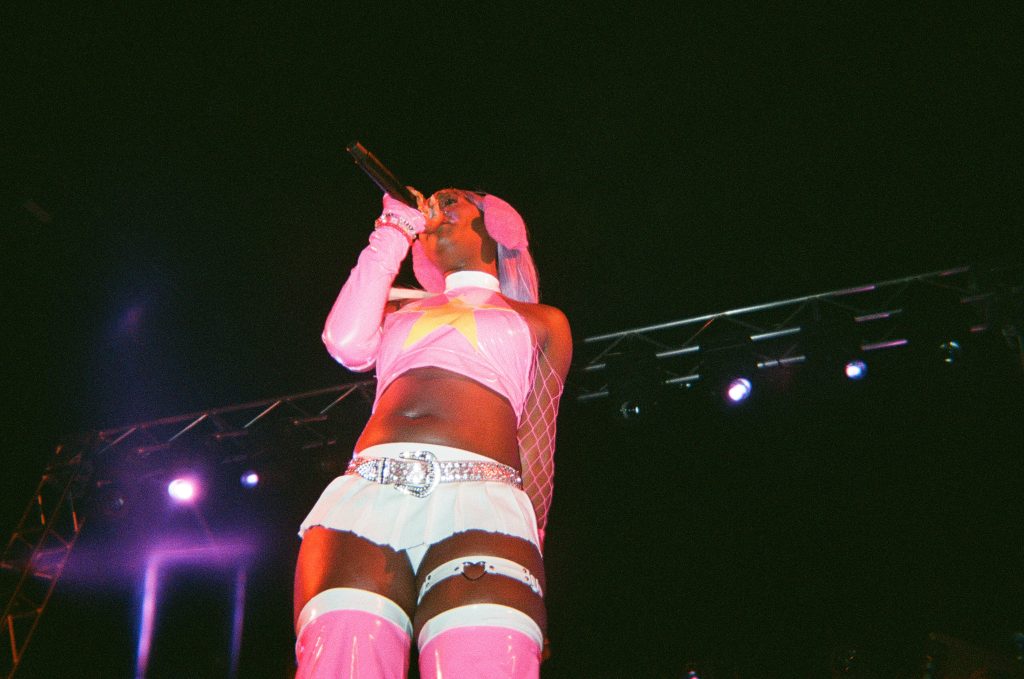
But it was hard to feel these slots were meant to do anything but dangle a notable name in front of audiences like jingling keys to a toddler. On the contrary, Julia Fox, who has spent the year gallivanting with Charli xcx and hoping to snowball her social clout into a music career. Taking the stage to Charli xcx’s name-dropping “360,” Julia Fox’s 15-minutes of stage time was nearly parodic; it’s unclear whether Julia herself is in on the joke. A guest appearance from Honey Balenciaga helped soothe the sheer hilarity, but it’s difficult to view Julia’s coming music career as anything other than geared for Twitter fingers and deuxmoi headlines.
Even established artists had an air of hopeful virality around them. Night one headliner Tinashe received just a tepid welcome until the opening low end of “Nasty” popped. Her selection was doubly unique, given much of the festival felt geared towards either a white hyperpop or Latin experimental audience. Considering her last-minute replacement for Kim Petras, who was poised to top the festival bill until several weeks ago, the selection felt heavily dependent on her single’s current success.
Tinashe’s inclusion highlighted a rift between the festival’s strategy and its evident audience. No matter what corporate curations or algorithmic sorting will have you believe, queer will simply never be anything further than a qualifier in music. Outside their broadly majority gay fanbase, overlap between Mahmood, Slayyyter, and Tinashe is near non-existent, and the reaction to each made the fact sometimes painfully obvious. Diversity on a bill like this is obviously welcome, but the segregation amongst those interested in hyperpop, R&B, reggaeton, techno/house, etc. was more successful in creating dull, microcosmic audiences than a hopeful cross pollination between artist bases.
This isn’t to say the festival’s audience or curation didn’t feel genuine; it was still brilliant to see the world’s most exciting and cutting edge music all platformed on one stage. Eurovision and X Factor alum Mahmood presented an acceptable stateside debut, Tokischa and Slayyyter both put forward headline-worthy performances, and Tinashe’s 20 non-”Nasty” songs reminded of her status as one of this century’s most exciting R&B talents.
By and large though, it was Arca who set the weekend’s high bar. Equipped with a beautiful swing harness, a fog machine gun, and little else, Arca launched a sonic and visual assault in the rain as she weaved through a set of grotesque soundscapes and brutally danceable tracks. Shattering waves of sound battered enamored bodies and even those disinterested could not help but turn their head towards Arca’s reverent persona, which was matched only by her cacophonic electronic sonics.
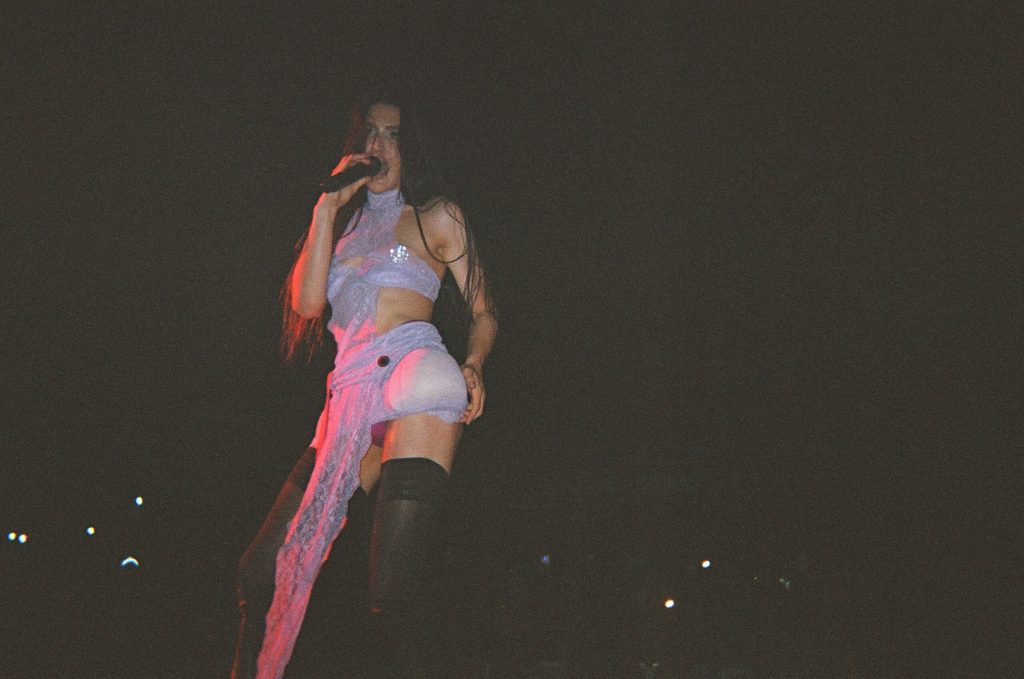
LadyLand’s piece de resistance was undeniably the Vogue Ball House Battle, a showcase of contemporary ballroom talent heavily teased to have shocks and surprises in store.. The showcase, MC’d by ballroom legends Dashaun Basquiat and Kevin Jz Prodigy, featured performances from the houses Alpha Omega, Balenciaga, Miyake-Mugler, and Tisci. The festival came down with a near religious fever as Basquiat began revealing special guest judges and Madonna strutted on the stage, shoulder to shoulder with Bob the Dragon Queen, Arca, Tokischa, and Sevdaliza. Closing a weekend so heavily honoring and indebted to ballroom culture, the festival’s marquee event offered a flashy reminder that Paris is, in fact, still burning.
In a 1983 essay, Kim Gordon wrote “people pay to see others believe in themselves.” The essay, written in tribute to no wave and experimental pioneer Glenn Branca, handled the merging of the avant-garde and mainstream; it reckoned with the commercialization of what was viewed as the most authentic artistic expression of self, regardless of what that self could be.
The performances staged at LadyLand weren’t intimate, or authentic, or exclusive like so many trendsters posit themselves to be. LadyLand provided a chance for thousands of people to celebrate the confidence they may or may not have. It felt good to see Madonna, hot off a concert attended by 1.6 million, share a stage with a diaspora of self-coronated freaks. It feels good to look on the stage, see someone that feels like you, and see something you could be, even if you never will.
